The Early Schools of Indian Buddhism Series
Buddhist schools at the time of the Third ‘Moggaliputta Tissa’ ‘Asoka’ Council
Part 8
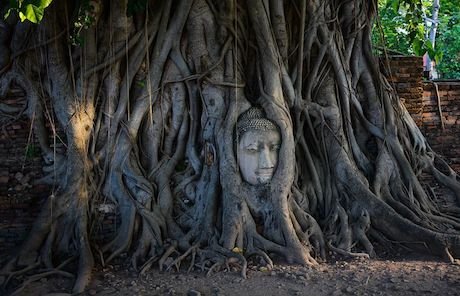
In Part 3 of this series, we looked at the Third (and Fourth) Council of Buddhism and gave a general overview of who participated, what was discussed, where it was held, and why it was necessary to convene it in the first place. As was mentioned in Part 3, the third council is considered a sectarian council, meaning they are not acknowledged as valid by the schools that do not claim to have participated in them—so the third ‘Asoka’ council can be considered a Theravada council.
The third Buddhist Council was held at Pataliputra, in the seventeenth year in the reign of King Asoka around 255 B.C.; and was headed by a senior follower, named Moggaliputta-Tissa Thera. The account of the Third ‘Asoka’ Council is only to be found in the Pali commentaries (atthakatha) and the Ceylonese chronicles. Even the Cullavagga of the Vinaya pitaka does not mention it. The omission of this Council in non-Theravada sects shows that this was a sectarian council. Both Chinese pilgrims Yuan Chwang and I-Tsing also do not mention this ‘Asoka’ Council.
Section 1 — The schools that ‘participated’ in the Third Council according to the Kathavatthu

The only school that actually participated in the Third Council are the Sthaviravada. The other schools that are mentioned are only referred to in the Kathavatthu for their alternative points of controversies, and the rebuttals from the Sthaviravada viewpoint. Although the Kathavatthu is classified as a canonical text in the Theravada tradition, as being part of the Abhidhamma Pitaka, the text has been expanded up until the second century AD, as evidenced by the ‘late’ schools that are included in the text. Likely the text started out small and was expanded as more controversial viewpoints from other schools were encountered and dealt with as such.
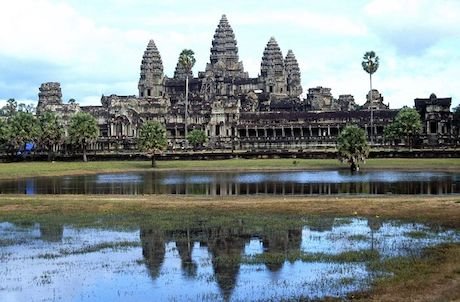
This school sees themselves as the root school of Buddhism, professing the doctrine of the elders, and are generally regarded as the school that held this Third Council.
This school is identified by the founder being an arhat named Vatsyaputra. The name of a large group of monks belonging to the Vajjian clan and originating from Vesali, who, one century after the Buddha's death, brought forward ten points that were discussed at the Second Council.
Epigraphical proof of this school:
Vatsiputrika (Luders, 923): Buddhist pillar at Sarnath (Varanasi, from the Gupta period (4th century AD).
This is the great assembly school.
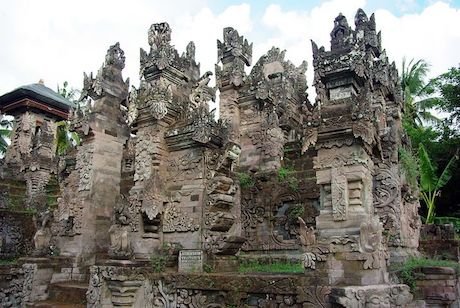
Epigraphical proof of this school:
- Mahasaghia (Konow, p. 48): Mathura, Lion Capital (1st century AD).
- Mahasamghiga (Konow, p. 170): Vessel of Wardak, from the year 51 of the Kanishka era (179 AD).
- Mahasaghiya (Luders, 1105): Cave at Karli, from the year 18 of Gautamiputra Satakarni (106-130 AD).
- Mahasaghiya (Luders, 1106): Cave at Karli, from the year 24 of Vasisthiputra Puloma (130-159 AD).
- Ayirahamgha (EI, XX, p. 17): Pillar at Nagarjunikonda, from the year 6 of Mathariputra Virapurusadatta of the lksvakus (250-275 AD).
- Ayirahagha (EI, XX, p. 20): Pillar at Nagarjunikonda (250-275 AD).
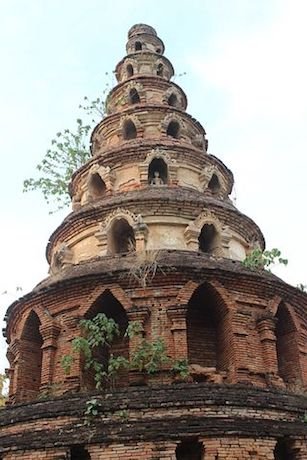
This school considered all aggregates, no more than a heap of embers (kukkula), from which the flames died out as from an inferno of ashes. They based their view on the Buddha's declaration made in the Adittapariyaya sutta (“All is on fire, monks”).
This school is identified by the founder’s name of Sammita (right measure). In Tibetan sources, they are described as disciples of a teacher named Sammata. The name also means ‘the complete school.’
Sammitiya (Luders, 923): Buddhist pillar at Sarnath (Varanasi), from the Gupta period (4th century AD).
This school identifies themselves as the vehicle of the sages. Literally, the name of this school means ‘Used to being auspicious,’ this is far from being a modest Buddhist school name at all! The Katha-vatthu translation calls it the ‘lucky vehicle.’
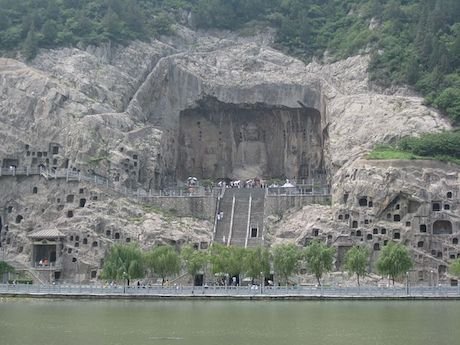
- [Bhadaya]niya (Luders, 987): Cave at Kanheri, in the reign of Yajnasri Satakarni (174-203 AD).
- Bhadrajanijja (Luders, 1018): Cave at Kanheri, undated.
- Bhadavaniya (Luders, 1123): Cave at Nasik, from the year 19 of Vasisthiputra Puloma (130-159 AD).
- Bhadayaniya (Luders, 1124): Cave at Nasik, from the years 19 and 22 of Vasisthiputra Puloma (130-159 AD).
This school is identified by the founder being a brahmin who governs the land.
Mahi[sa]saka (EI, XX, p. 24): Pillar at Nagarjunikonda. from the year 11 of Ehuvula Santamula II of the Ikvakus (end of the 3rd century AD). Mahisasaka (EI, I, p. 238): Kura pillar in the Salt Range (Punjab), from the reign of Toramana Shaha Jauvla (end of 5th century AD).
Epigraphical proof of this school:
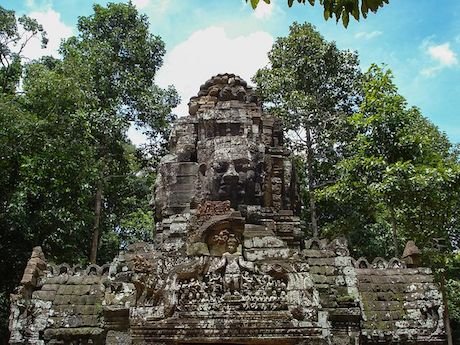
- Sarvastivatra (Konow, p. 48): Mathura, Lion Capital (1st century AD).
- Sarvastivatra (Konow, p. 48): Mathura, Lion Capital (1st century AD).
- Sarvastivatin (Konow, p. 137): Shah-ji-ki Dheri, Reliquary of King Kanishka, year 1 of King Kanishka (128-151 AD).
- Sa[rvasti]vadati (Konow, p. 145): Stone of Zeda, from the year 11 of Kanishka (128-151).
- Sarvastivada (Konow, p. 155): copper Stupa at Kurram, from the year 20 of Kanishka (128-151 AD).
- Syarvastivadin (Konow, p. 176): Inscribed potsherd from Dherai, undated.
- Sarvastivadi (Luders, 12): Buddhist statue from Kaman, from the year 74 of an unspecified era.
- Sarvastivadin (Luders, 918-19): Buddhist statue in Sravasti from the reign of Kanishka (128-151 AD).
- Sarvastivadin (Luders, 929a-929b): Buddhist balustrade at Sarnath (Varanasi), undated.
- Savasthidiya (Luders, 125c): Buddhist statue at Mathura, undated.<?
- Bah[usuti]aka (Konow, p. 122): Pitcher from Palatu Dheri, undated.
- Bahusutiya (EI, XX, p. 24): Pillar at Nagarjunikonda. from the reign of Mathariputra Virapurusadatta (250-275 AD).
- Bahusutiya (EI, XXI, p. 62): Pillar at Nagarjunikonda. from the year 2 of Ehuvula Santamula II of the Iksvakus (end of 3rd century AD).
- Cetikiya (Luders, 1248): Inscribed stone from Amaravati, from the reign of Vasisthiputra Puloma (130-159 AD).
- Cetika (Murti, No. 33, p. 278): Tile from Amaravati, no date.
- Cetiyavamdaka (Luders, 1233): Sculpture at Amaravati, no date.
- Cetiavadaka (Luders, 1263): Sculpture at Amaravati, no date.
- Cetika of Rajagiri (Luders, 1250): Sculpture at Amaravati, no date.
- Jadikiya (Luders, 1244): Pillar of Amaravati, no date.
- Cetika (Luders, 1130): Cave at Nasik, no date.
- Cetiya (Luders, 1171): Cave at Junnar, no date.
- Seliya (Luders, 1270): Pillar of Amaravati, no date.
- Mahavanaseliya (Luders, 1230): Pillar of Amaravati, no date.
- Mahavanasela (Luders, 1272): Sculpture at Amaravati, no date.
- Aparamahavinaseliya (EI, XX, p. 17): Pillar at Nagarjunikonda, from the year 6 of Mathariputra Virapusadatta (250-275 AD).
- Aparamahavinaseliya (EI, XX, p. 19): Pillar at Nagarjunikonda. from the year 6 of Mathariputra Virapusadatta (250-275 AD).
- Aparamahavinaseliya (EI, XX, p. 21): Temple at Nagarjunikonda, from the year 18 of Mathariputra Virapusadatta (250-275 AD).
- [Apa]raseliya (EI, XXVII, p. 4): Tile from Ghantasala, formerly Ukhasirivadhamana, the Bardamana of Ptolemy (VII, 1, 93).
- Aparisela (Luders, 1020, with the correction in IHQ, XVIII, 1942, p. 60): Cave at Kanheri, no date.
- Ka . . . (Konow, p. 63): Inscribed pottery from Takht-i-Bahi, undated.
- Kasavia (Konow, p. 88): Copper ladle from Taxila, the gift of Isparaka, probably Aspavarma, vassal of Azes II, ca 5-19 AD.
- Kasyaviya (Konow, p. 89): Copper ladle from Bedadi, in the kingdom of Urasa, undated.
- Kas[y]aviya (Konow, p. 122): Pitcher from Palatu Dheri, undated.
- Kassapiya (Luders, 904): Buddhist cave at Pabhosa, from the year 10 of Udaka, probably the fifth Sunga (see above, p. 358).
- Sovasaka (Luders, 1106): Cave at Karli, from the year 24 of Vasisthiputra Puloma (130-159 AD).
- EI = Epigraphia Indica (Journal)
- Konow = Kharoshti Inscriptions by S. Konow
- Luders = List of Brahmi Inscriptions
- Murti = Amaravati Sculptures by Sivaramamurti
- Introduction to the history of Buddhist Councils and Schools-Part 1
- The Buddhist Councils — Who, when, where, and why?Part 2
- The Buddhist Councils — Who, when, where, and why?Part 3
- The History Of ‘Northern Buddhists’ of Sarvastivada - Part 4
- The History Of ‘Northern Buddhists’ of Sarvastivada - Part 5
- Buddhist schools at the time of the First ‘Maha-Kasyapa’ Council at Rajagaha. - Part 6
- Buddhist schools at the time of the Second Council at Vaisali (and the subsequent Mahasamghika Council). - Part 7
- The Ten Stages of the Mahayana Bodhisattva Path-The Two Preliminary Stages-Part 1
- The Ten Stages of the Mahayana Bodhisattva Path-The Two Preliminary Stages-Part 2
- The Ten Stages of the Mahayana Bodhisattva Path-The Two Preliminary Stages-Part 3
- The Ten Stages of the Mahayana Bodhisattva Path-The Two Preliminary Stages-Part 4
- The Ten Stages of the Mahayana Bodhisattva Path-The Two Preliminary Stages-Part 5
- The Ten Stages of the Mahayana Bodhisattva Path-The Two Preliminary Stages-Part 6
- The Ten Stages of the Mahayana Bodhisattva Path-The Two Preliminary Stages-Part 7
- The Ten Stages of the Mahayana Bodhisattva Path-The Two Preliminary Stages-Part 8
- The Ten Stages of the Mahayana Bodhisattva Path-The Two Preliminary Stages-Part 9
- The Ten Stages of the Mahayana Bodhisattva Path-The Two Preliminary Stages-Part 10
- The Ten Stages of the Mahayana Bodhisattva Path-The Two Preliminary Stages-Part 11
- The Deathless In Buddhism
- The "Timeless" Teaching-Being Beyond Temporality
- The Nine Successive Cessations In buddhist Meditations - Part 1
- The Nine Successive Cessations In buddhist Meditations - Part 2
- The Nine Successive Cessations In buddhist Meditations - Part 3
- The Twelve Links Of Dependent Origination
- THINGS to DEVELOP and THINGS to AVOID
- The First Noble Truth
- The Second Noble Truth
- The Third Noble Truth
- The Fourth Noble Truth
- 10 Fold Path Series
- EATING MEAT — WHY THE BUDDHA WAS NOT A VEGETARIAN
Section 2 — The schools that did not ‘participate’ in the Third Council according to the Kathavatthu
The Kathavatthu text designates these schools as not participating, as there are no points of controversy assigned to these schools in the text.
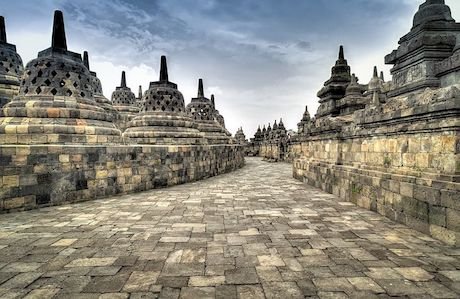
This is the school that teaches that both samsara (suffering) and nirvana (emancipation) are unreal determinations of reality. It held that all the doctrines are understood by unique and immediate wisdom, for all the doctrines of the Buddha are comprehended by the intellect.
The name of this school is somewhat of a mystery, as it means ‘those coming from six towns,’ but we are not clear what these towns were called.
This school is identified by the founder’s name of Dharmagupta (right measure). The name of this school means the Guardians of the teachings (dharma). They had their own Vinaya text, and they were called after their leader, Dharmagupta. The Dharmagupta Vinaya is used in both China and Tibet today.
Section 3 — The schools that existed at the time of the Third Council according to Vasumitra
This is the great assembly school. In some texts, a distinction is made between the Mula-Mahasamghika (root school) and the later Mahasamghika school.
This is the school that teach the doctrine of the supra-mundane dharmas, that the Buddha is transcendental.
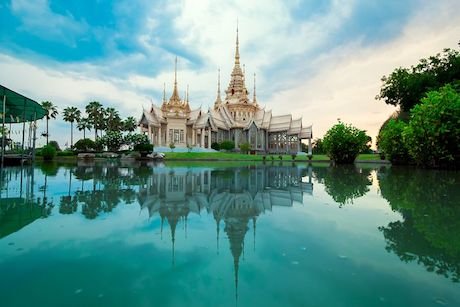
This school considered all aggregates, no more than a heap of embers (kukkula), whence the flames have died out as from an inferno of ashes. They based their view on the Buddha's declaration made in the Adittapariyaya sutta (“All is on fire, monks”). This view was likely the reason for their original name of Kaukkulika or Kaukkutika.
This is the school that identifies themselves as those who have heard much. According to Tibetan sources, they derived their name from their teacher Bahusrutiya. The name also means ‘the learned doctor.’
Epigraphical proof of this school:
This is the school that makes a distinction between ultimately true and conventionally true dharmas. Their name means the Conceptualist school, who held that all suffering in life is absolute.
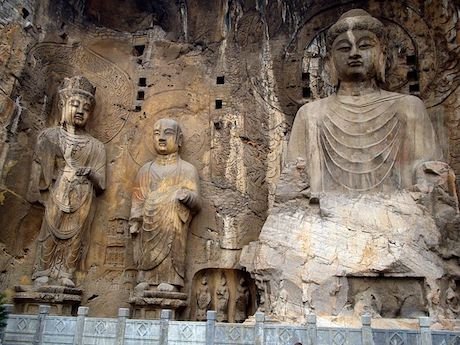
This is the school who geographically identify themselves as those who are dwellers on the Caitya mountain.
Epigraphical proof of this school:
This is the school who geographically identify themselves as those who dwell as western highlanders in the Andhra region. Their school was at Dhanakataka, in the Andhaka country, somewhere near Amaravati on the South-East coast of India. According to one tradition, they were connected with the Caityasaila.
Epigraphical proof of this school:
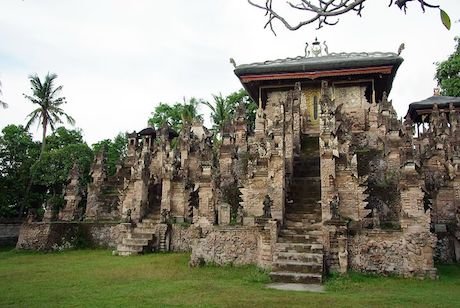
This is the school who geographically identify themselves as those who dwell as eastern highlanders in the Andhra region. According to Tibetan sources, they were so called because they lived on the Purva Mountain. They were also called Uttara (North) because this mountain was to the North of the Caitya mountain of the Caityasaila school.
Epigraphical proof of this school:
Puvasel[i]ya (EI, XXIV, p. 259): Pillar with Dharmacakra at Dharanikota, probably dating from Vasisthiputra Puloma (130-159 AD). Puvaseliya (An. Rep. A.S.I., 1923-24, p. 83): Alluru (Kistna District), no date.
This school’s name means All (Sarva) Exists (Asti) School (vada). They held that all constituted realities (dharmas) exist in the past, present, and in the future. It is unclear why Vasumitra associates them with Hetuvada (Causation school). As a school hetuvada is mentioned in the Majjhima Nikaya (MN I.409) but it is unlikely to be a reference to the Sarvastivada school’s tenets.
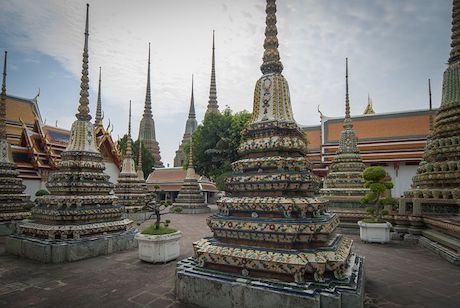
This school was also called Suvarsaka (good year), the founder’s name which was of the Kasyapiya family. The followers of the monk named Kassapa, obviously not the Maha-Kassapa of the First Council. The Kasyapiya school was known by three other names, Sthaviriya, Saddharma-varsaka = the flower of the true teaching (by Bhavya from the Sarvastivada school), and Suvarsaka (by Taranatha). Although they split from the Sarvastivada school, they seem to have been more in agreement with those of the Sthaviravada school, which is probably the reason why they were also called Sthaviriya.
Epigraphical proof of this school:
Abbreviations for epigraphical proofs
In the next article, the Buddhist schools at the time of the Fourth ‘Kanishka’ Council will be discussed.

I will flag comment spam at 1% strength. If you keep on spamming my post, I will flag you at 100%. I don't care if you have limited English abilities, write a couple of sentences about this article, no copy-paste, please. I will flag: one sentence comments, links to your blog and begging for up-votes and follows. Also, I will flag comments that have nothing to do with my blog's article. I will also check your comment section to see if you have been comment spamming on other blogs.
@reddust,
When you start your research on Sri Lanka? We had early schools of Buddhism as well! Great article my dear friend! Nice to see you around!
Cheers~
I don't know if I will go into specific areas or just council meetings @theguruasia. My husband and I found some interesting stories we are going to work into the narrative in our next paper. We both have different writing styles and have struggled over how our articles we write together will look. My husband is a software engineer and writes documents dealing with technical issues, and our articles show how his mind works. I want more stories about how the Buddhas teachings helped the kings and communities that supported the monasteries. So far my husband has won the power struggle...hahaha
Our next paper will have my favorite story about how virtue strengthens a community, and immoral behavior undermines a strong nation leaving it vulnerable to invasion.
@reddust, After long time I came to your blog post coz past time I'm busy with baby born. Now I have time to reading and commentary. Those Third Moggaliputta Tissa and Asoka Council I've learned my ordinary level Buddhism lesson under the Buddhism teacher of my school. I have forgotten something and you remind me again what kind of context I've missed through your valuable post. Also I need to take time for extra ordinary learning. Have a great day.
Congratulations @madushanka, I will check out your blog, I haven't been on Steemit for a little while and need to check up on all my friends. I want to know if your baby is a little boy or girl and I hope Mom sailed through delivery with ease. It's interesting to see all the different views and struggles Buddhist schools went through as they evolved into the institutions we know today. I see the same struggles and arguments we all go through in our daily lives played out in the council meetings. It seems that even Arahats and wise men still have to struggle with power and wealth. All the schools were competing for funds from the elites who supported their monasteries.
Thanks your big wishes. My baby is girl. My wife sailed through delivery ease. I'll show my happiness and thanks giving to everyone via Dtube and Dlive.
Please post the link here on my comment section @madushanka <3
Ok I'll post before end of this month. She was born 26th June. My birthday was 28th June Lol
I'll let you also through comment and mentioned your name.
The picture of the Tiger's Nest monastery is beautiful. It makes me want to go there.
It has been a while since I saw your posts, @reddust. I hope you are doing good.
@marcusantoniu, I want to make a pilgrimage to all the ancient monasteries. The Korean's have some of the most beautiful Buddhist artwork in their temples. I started studying Dzogchen in Vajrayana Buddhism because Tibetan Buddhist art hooked me like a fish, I loved that regions art and found the Vajrayana Dzogchen complemented my Theravada teachings and meditation. I was lucky enough to find wise and kind teachers from both traditioned. I think Monks and Nuns make the best teachers; they have excellent discipline and knowledge. Someday I will make the trek to visit Tigers Nest. Hopefully, sooner than later because I am getting old, hiking into these remote monasteries takes good lungs and endurance.
They might be in high altitude. If they are let me know to give you some advise!
Lord Buddha taught us all about being coll and calm we need this in our society right in fact this school should be there in every corner of our country
@teenovision, what I have found from my studies to find calmness and coolness one must let go of negative conditioning and replace them with virtuous conditioning. Once virtues are installed, one can work on seeing reality as it is and break the rounds of rebirth and suffering.
True
Very thorough and detailed. I truly enjoyed seeing the photos as well he put a lot of work into the post thank you. @reddust
I will tell my husband @enjoywithtroy; he did most of the research for this article. Our next paper will have more stories...hahaha <3
oh god, I have missed my writing with my friend, I am daily reviewing your writing, may you be healthy always my friend
I missed you too @steemitcountry, I had no idea Indonesia had so many lovely Hindu and Buddhist temples. I really want to come and visit now...hahaha
My writing is improving by leaps and bounds, however, learning new skill drains my energy. I need to sleep more and do more walking, which I did while I was away from Steemit. Now I feel healthy again and will be writing more.
I also always miss you mu friend ,, I also focus on gardening, I get peace by working and teaching ,,, you are my best friend always and forever
I've missed my friend, are you sick? so it's been a long time since we greeted each other?
@steemitnatural, I needed to take a break and build up my eating, exercise, sleeping, and meditation routines. The last year I've worked very hard on creating paintings for showing and art galleries. The added work of writing upset my old routines and I needed to take a break and find some balance. Writing is very difficult for me, emotionally exhausting. I had to find a new routine to create enough physical and mental energy for my projects and keep my body healthy.
I found a new combination of diet, exercise, and going to bed earlier, getting up earlier that has helped me lose the weight I gained sitting around painting and writing last winter and let go of stress. Meditation continues on, as usual, nothing seems to upset how I meditate.
Hopefully changing my routines will help create a healthy supply of creative energy along with calm serenity.
I missed my Steemit friends <3
I am glad you are healthy and healthier, I also focus menbantu my husband opened a new papaya field, also help him teach ,, I really miss you always my friend ,,
Thanks to the divine nature of reading to him again. I am very happy to read to you again on this website, I was worried about you eleven days ago, without hearing from you; I hope the health situation is better.
I believe that Buddhist learning as a Christian should not become a heavy burden of historical situations; what is important is the essence, to grasp that essence and make it manifest through our actions -faith without works is dead-, Buddhist practice without tangible facts of personal life and towards others is only a compendium.
@amigoponc, Jesus and Buddha's teachings don't need history to show how they work when one applies them to their life. All you need to do is try them on and see if they work.
The history of religious institutions is important to me because it shows how teachings that can strengthen and free us from negativity and slavery on an individual, community, and national level can also be used to control the masses rather than free the individual from their self-caused suffering. Control systems use our suffering for profit and so do corrupt religious systems. If there is no way out of a political system or religious system it is a cult. I learned this from studying history
I see the world as cyclical, humanity has been through this time of upheaval caused by nature or human events over and over throughout our history, and many times nature influence human behavior. Look up Kali Yuga, @amigoponic
There is no such thing as abstract chaos, there are always patterns-inside-patterns-inside-patterns 🌀
Your post is really well detailed and comprehensive in the information's it contains . Buddhist religion is one of the oldest religion on earth and it's also has a lot of historic sites and locations associated with the religion @reddust
Thank you @obest, Buddhism is very old and had changed on the surface level depending on the location and culture. What I have noticed in my studies is that the basics stay the same. Points of arguments are about monastic rules and what is consciousness and how this is related to the body and identity.
Your post shows what a deep knowledge and hardwork really is ....
Good job bro ...👌👌
@reddust
Thank you @karanak47